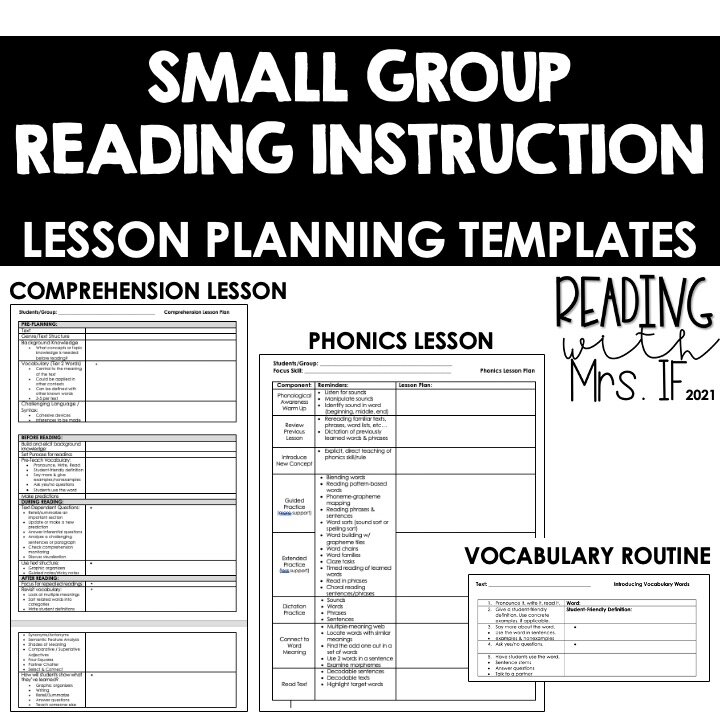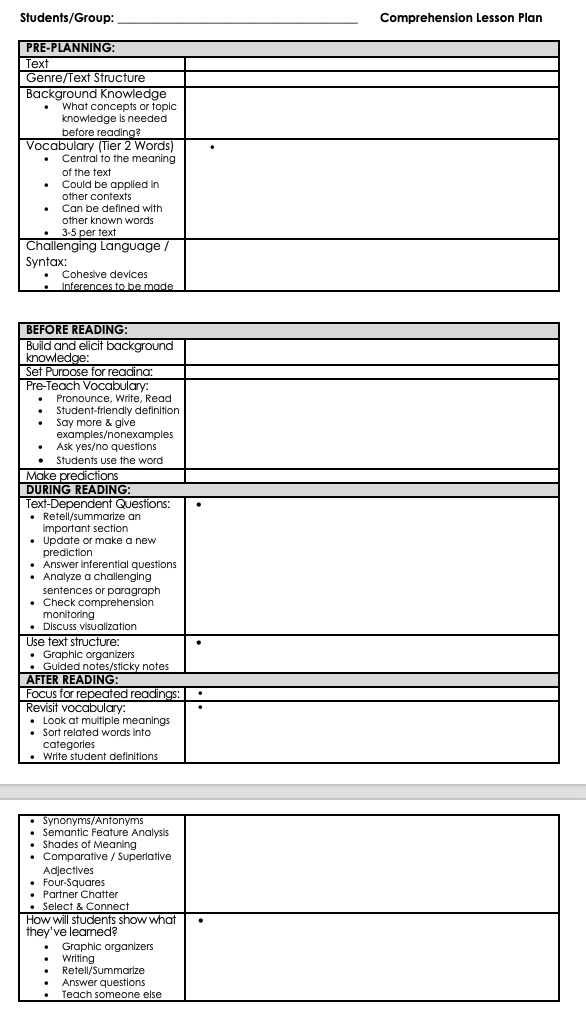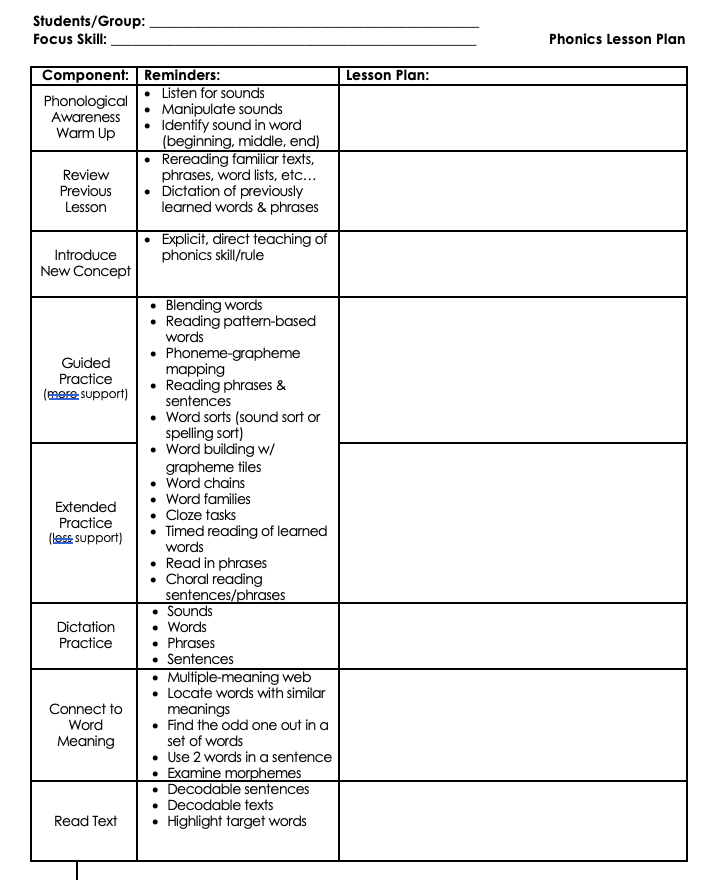How do I plan for small group reading instruction?
Small group instruction is an essential part of my literacy block. As a 3rd grade teacher, I typically have students who come to me with all levels of literacy needs and abilities. And while I value my whole-group 3rd grade reading curriculum, it is in differentiated, small group instruction that the magic really happens. In these small groups, I can provide students with the explicit instruction in word recognition skills they need or the instruction in comprehension they’re ready for. And I have two planning templates I use for each of these different groups: a phonics lesson plan template and a comprehension lesson plan template.
Both of my lesson planning templates have been heavily influenced by what I have learned through my LETRS training (Language Essentials for Teachers of Reading & Spelling). They closely mirror the recommendations of this coursework and are based in the science of reading. However, I have made the templates personalized for me and my 3rd grade classroom. I have also included reminders for myself in both templates that help me think about activities or strategies that will work best to support students. I have found it helpful to have a blend of reminders and space to write the actual lesson all in one place. But these templates are editable so make them work for you!
Assessments
It is worth noting that before I get to small group instruction, I administer screening and diagnostic assessments to my students to help create intentional small groups. Acadience Reading is the screener I use, specifically the Oral Reading Fluency (ORF) assessment with Retell and the Maze comprehension assessment. From these two screening assessments, I can determine who will also get a phonological and phonics diagnostic assessment. My favorites are David Kilpatrick’s Phonological Awareness Screening Test (PAST) and the LETRS Phonics and Word Reading Survey but there are many options out there. These assessments give me the information I need to make grouping decisions.
Comprehension Lesson Planning Template
Students who are at or above benchmark on Acadience ORF will be in small groups with students at similar levels. To plan for their instruction, I use the Comprehension Lesson Plan template I have created. Some of these students struggle with comprehension and others need extension opportunities. My lesson planning template works for both.
My Comprehension Lesson Plan is organized to help teachers with the pre-planning of the lesson and the actual delivery of the lesson. Before teaching a comprehension lesson, I want to be familiar with basic components of the text, including:
· Genre & text structures used in the text
· Background knowledge that might be needed
· Key vocabulary I want to pre-teach
· Challenging language or syntax that might confuse students
With this solid understanding in place, I am better able to plan to flow of the comprehension lesson. It may be time consuming to spend all this planning time on these pieces for each text but it pays off when delivering the lesson. When I have a solid understanding of the text, key vocabulary, and language structures, I can successfully guide my students in their comprehension development.
Phonics Lesson Planning Template
My students who scored below benchmark on Acadience ORF will need instruction in word recognition skills. The PAST and the LETRS Phonics and Word Reading Survey, along with students’ words correct per minute and accuracy scores from Acadience, help me group students with similar needs together. I use my Phonics Lesson Plan template for these groups.
My Phonics Lesson Plan is organized to help build student practice in key phonics skills. Students start with warm up and review and then move into explicit, teacher-support instruction and practice. Towards the end of the lesson students are practicing more independently, as well as writing and reading using the focus phonics skill. I often include more activity ideas than could be completed in one day since I will teach the same phonics skill until students show mastery.
When planning for phonics instruction, be sure to reference your curriculum’s scope and sequence. The order of phonics skill can vary from curriculum to curriculum so you want to have a set sequence you plan to use. I like to use the LETRS Scope and Sequence for Word Study, Reading, and Spelling but there are other great options out there too.
I hope you find these planning templates helpful for you and your students! Please share your successes and keep your questions coming! I love talking about small group reading instruction!



